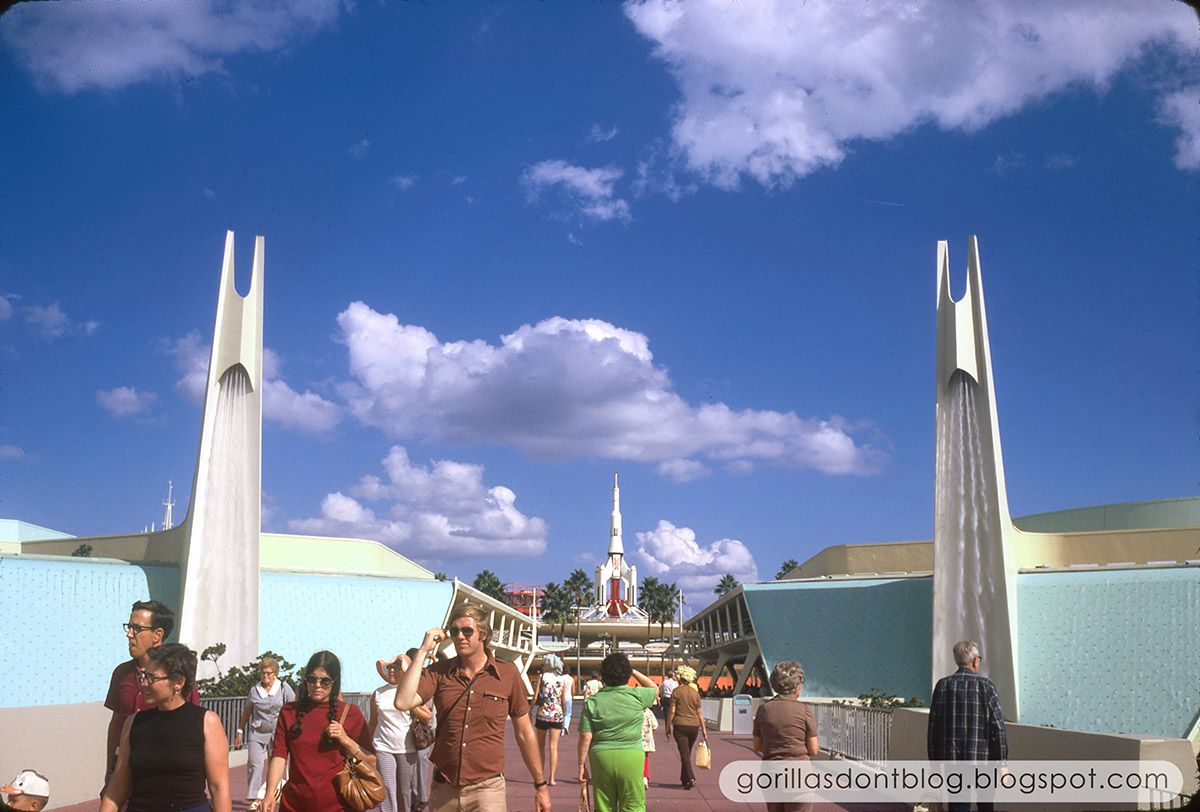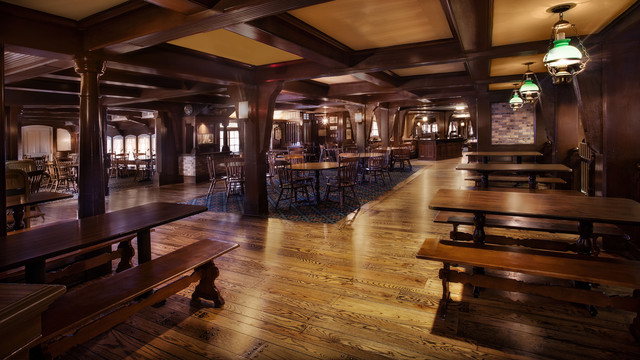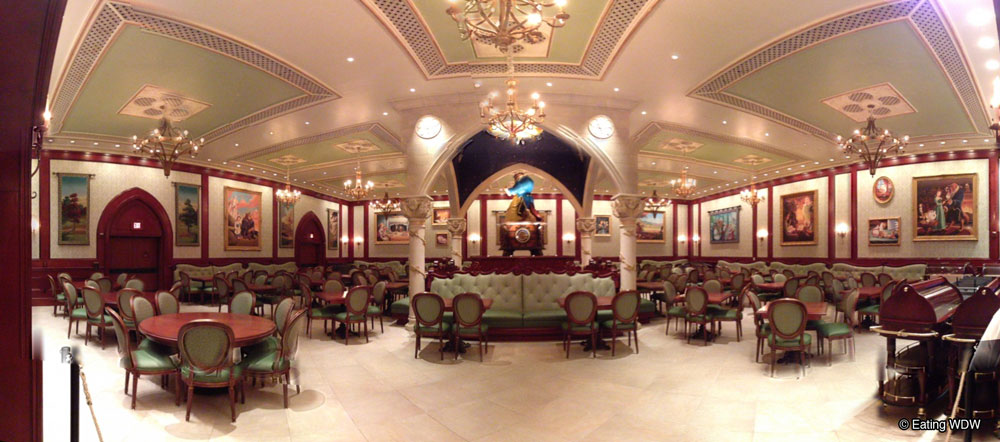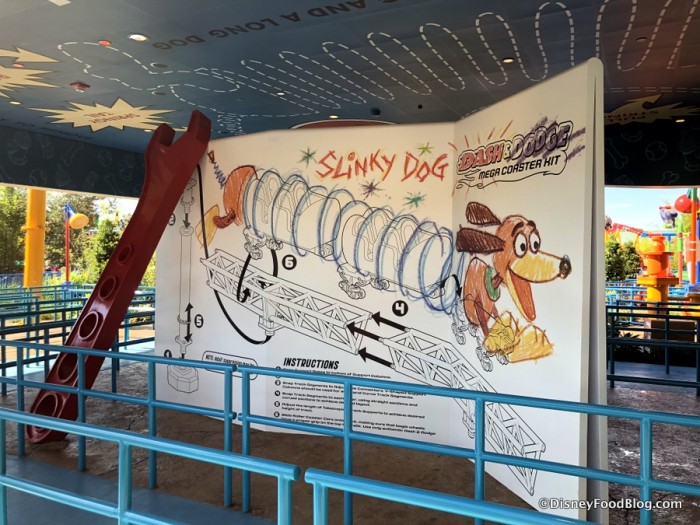More and more, I'm convinced that there are very few people left in WDI who understand the power of good architecture and how it can add meaning to a space. Instead of buildings that exude their theme from their very core, there has been a rise of relatively nondescript spaces that are "themed" only by superficial decoration. TL94's reliance on visual clutter and text-heavy signage was certainly a step down that road, but WDI's apparent design philosophy has continued to evolve since then
As an example of how things have changed, consider the interior design of the Columbia Harbour House at MK. Everything from the low ceilings, heavy beams, turned columns, and wooden floors to the light fixtures and furniture reflects the nautical theme, and evokes the feeling of a square-rigged ship. There is almost nothing on the walls, but the design is instantly understood in a universal way.
More recently, the music box room at Be Our Guest looks more like a generic hotel ballroom, and only reflects the theme through (rather heavy-handed) artwork scattered around. Very little about the room's dimensions and proportions, building materials, or fixtures indicates that it's supposed to be inside a castle hundreds of years ago. Swap out the art for nature photos with inspirational sayings, and it's suddenly Multipurpose Room B at your local airport Hilton.
In a rather extreme example, Toy Story Land consists almost entirely of rectangular buildings with flat walls, which are themed only by the graphics applied to them. Put up a fresh coat of paint, and any hypothetical meaning from the structures no longer exists.
Much like using names of fictional proprietors (Chester & Hester's Dinorama, Mater's Junkyard Jamboree, Oga's Cantina) graphics, text, and other set dressings can be a shortcut for designers to quickly give meaning to a space. However, when they're used in place of meaningful architecture, the entire experience feels hollow, as there is no real context for the space.
There's an adage in cinema that it's better to show the audience something than to tell them; using signage and graphics in a theme park setting tells the audience, but showing them through meaningful design is far more powerful. Creating that kind of space requires designers who understand how to evoke various concepts and who trust their audience to pick up on context clues.
These are the kinds of things that separate Disney's parks from the rest. It's been a gradual decline over many decades, but it seems like this is increasingly rare from WDI.
[Let the record state that I know there are plenty of examples contrary to this, but this seems to be the trajectory over a very long period. I actually think most of the BOG complex is well themed, and recognize that Pandora was done with almost no graphics or signage (though the photos in the Satu'li Canteen queue venture too far into the Applebee's school of design for my preference)]




